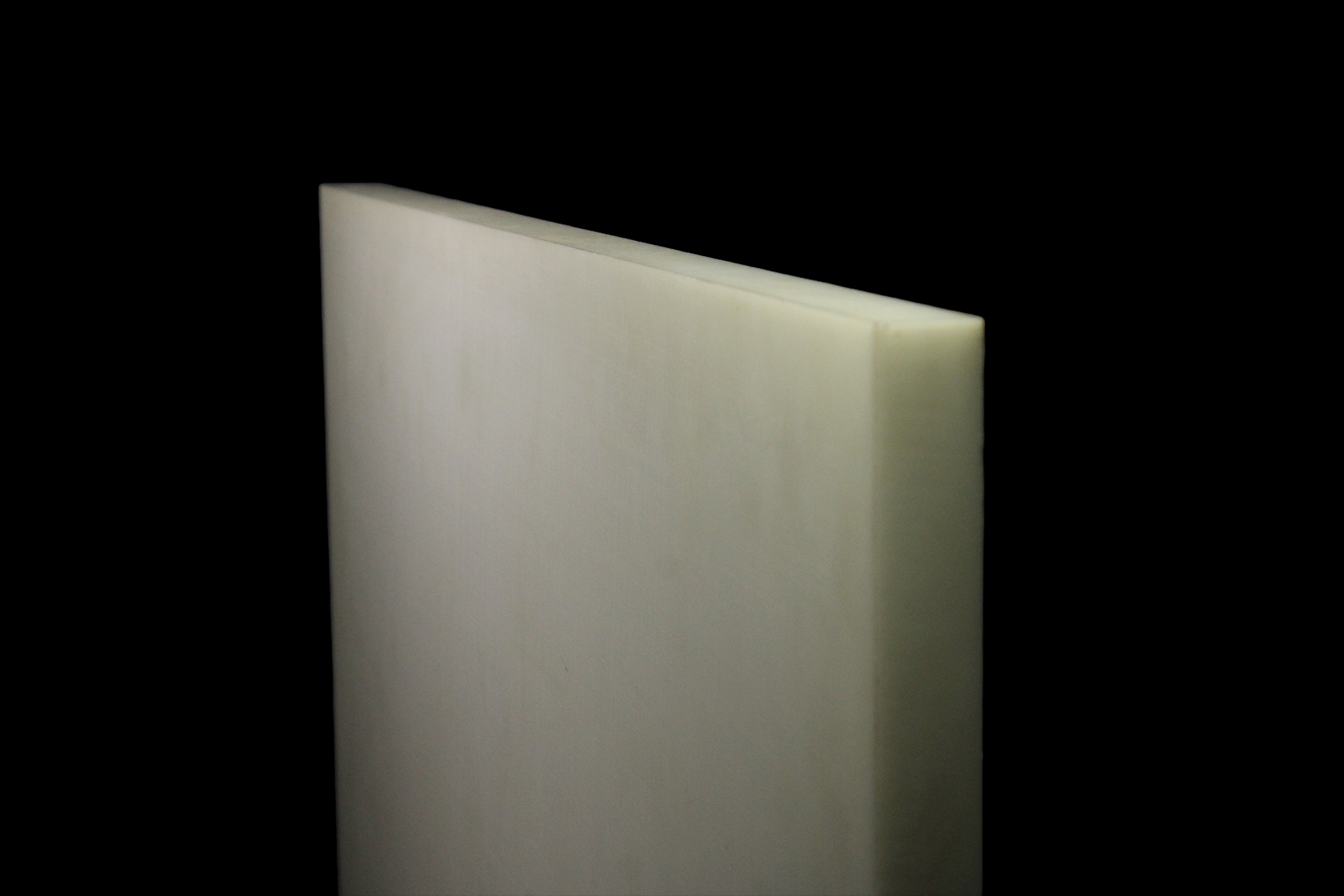
Polymat CAST NYLON
Cast Nylon is a high-performance thermoplastic known for its exceptional mechanical strength, dimensional stability, and wear resistance. Its versatility and reliability across automotive, aerospace, industrial, and manufacturing sectors make it a valuable material for high-demand applications. Cast Nylon’s unique combination of properties ensures it performs effectively in a range of challenging environments, providing durability and efficiency in various engineering solutions.
Mechanical Properties
- Tensile Strength: High tensile strength, typically around 80-90 MPa, making it suitable for load-bearing applications.
- Compressive Strength: Excellent compressive strength, often exceeding 100 MPa, enabling it to withstand heavy loads.
- Flexural Strength: Strong flexural strength, usually in the range of 100-120 MPa, providing good resistance to bending forces.
- Impact Strength: Moderate impact resistance, which can vary depending on the specific grade and conditions of use.
- Hardness: High hardness, typically around 80-90 Shore D, contributing to its wear resistance.
- Fatigue Strength: Good fatigue resistance, which allows it to endure cyclic loading without significant loss of strength.
- Creep Resistance: Excellent resistance to creep, ensuring dimensional stability under long-term loads.
Thermal Properties
- High Melting Point: Cast nylon has a melting point of around 220-230°C, allowing it to function effectively at elevated temperatures.
- Good Heat Resistance: It can withstand continuous service temperatures up to approximately 120°C without significant loss of mechanical properties.
- Low Thermal Conductivity: Cast nylon has low thermal conductivity, which means it does not easily transfer heat, making it suitable for insulation applications.
- Moderate Coefficient of Thermal Expansion: The coefficient of thermal expansion is moderate, meaning the material expands at a reasonable rate when exposed to heat, typically around 80-100 x 10⁻⁶/K.
- Good Thermal Stability: It retains its mechanical and physical properties well when exposed to varying temperatures.
- Resistance to Thermal Aging: Cast nylon is resistant to thermal aging, maintaining its properties over time even when subjected to heat.
- Moderate Flammability: While it has some resistance to ignition, cast nylon can burn when exposed to an open flame, and it requires flame retardants to improve fire resistance.
- Effective Operating Temperature Range: Cast nylon can operate effectively between -40°C to 120°C, making it versatile for various thermal environments.
Chemical Properties
- Good Resistance to Oils and Fuels: Cast nylon is resistant to various oils, greases, and fuels, making it suitable for automotive and industrial applications.
- Moderate Resistance to Acids and Alkalis: It has moderate resistance to weak acids and alkalis, but strong acids and bases can degrade the material over time.
- Low Water Absorption: Cast nylon absorbs minimal water (typically around 1-2%), which helps maintain its mechanical properties and dimensional stability in moist environments.
- Resistant to Organic Solvents: It shows good resistance to many organic solvents, including alcohols, esters, and hydrocarbons, making it suitable for chemical processing equipment.
- Susceptibility to Oxidizing Agents: Cast nylon can be degraded by strong oxidizing agents like chlorine and peroxide, which may limit its use in some chemical environments.
- Good Resistance to Fungus and Bacteria: It is resistant to fungal and bacterial growth, making it suitable for use in hygienic applications.
- Stable in Hydrocarbons: The material is stable in hydrocarbon environments, which includes many types of lubricants and petrochemicals.
- Limited UV Resistance: Cast nylon can degrade under prolonged exposure to UV light unless it is stabilized with UV inhibitors.
Industrial Applications
Automotive Industry
Gears and Bearings: Cast Nylon 6's high wear resistance and low friction make it ideal for gears, bearings, and bushings.
Engine Components: It is used in components like timing gears, valve seats, and wear pads due to its strength and heat resistance.
Transmission Parts: Used in the production of pulleys, rollers, and sprockets.
Textile Industry
Guide Wheels and Rollers: Its low friction and high durability make it suitable for guide wheels, rollers, and tensioners in textile machinery.
Cam Followers: Employed in the production of cam followers and other moving parts.
Food and Beverage Industry
Conveyor Systems: Cast Nylon 6 is used in conveyor belts, guide rails, and rollers due to its wear resistance and ability to meet FDA standards when food-grade.
Cutting Boards: Its non-toxic and durable nature makes it ideal for cutting boards and other food processing equipment.
Industrial Machinery
Wear Strips and Pads: Utilized in wear strips, slide pads, and bumpers where high impact resistance and wear properties are needed.
Sprockets and Chain Guides: Used in chain guides, sprockets, and other moving parts where low friction and high strength are essential.
Construction Industry
Bushings and Bearings: Employed in construction machinery for bushings, bearings, and rollers due to its toughness and ability to withstand heavy loads.
Cable Sheaves: Used in crane sheaves and other lifting equipment due to its ability to reduce weight and improve wear life.
Electrical Industry
Insulating Components: Cast Nylon 6 is used for electrical insulators and other components due to its dielectric properties.
Cable Glands and Connectors: Utilized in producing cable glands, connectors, and other electrical fittings.
Agricultural Industry
Wear Parts for Harvesters: Cast Nylon 6 is used in wear parts, such as guides and rollers, in harvesting machinery.
Bearings and Bushings: Employed in various agricultural equipment for bearings, bushings, and other load-bearing components.
Marine Industry
Dock Fenders: Used in dock fenders and other marine equipment due to its resistance to saltwater corrosion.
Propeller Bushings: Applied in propeller bushings and other underwater components due to its durability and resistance to wear.